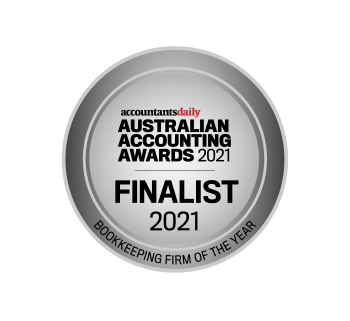What you need to know about e-invoicing
Most Australian businesses use invoices in some form, either sending them to their customers or to receive bills.
The way they do so, though, can soon change with e-invoicing, the latest government initiative to improve digitisation by equipping small businesses with a new tool to streamline their operations.
E-invoicing is a way to exchange invoices with other businesses that removes the hard parts and makes the whole process faster, more secure and more efficient.
Businesses that adopt e-invoicing can save, too. Each time an e-invoice replaces a paper or PDF invoice, it can save a business up to $20. This can add up fast for the 89 per cent of Australian small businesses (and their bookkeepers) still processing paper or PDF invoices manually.
We know it’s a challenging time for many small businesses right now without adding more to the mix. Since e-invoicing is just starting to roll out in Australia, you won’t see any big changes yet.
Instead, now is the time to register so you can easily get started when it’s ready for wider use – and don’t worry, it only takes a few minutes. With more big businesses and government departments getting on board, take a moment to get familiar with e-invoicing and prepare for the future.
So, what exactly is e-invoicing and how is it different to what I already do?
E-invoicing is a new addition to the toolkit of how Australian small businesses send and receive invoices and bills. Normally, invoices are created in accounting software or manually in a word processor and sent via insecure email or printed and posted. Businesses, or their advisors, then enter the data into their system, manually or with the help of automation tools like Hubdoc, before making payment. E-invoicing, on the other hand, is a way for businesses to exchange invoices directly between accounting systems, removing manual data entry.
What are the benefits of e-invoicing?
E-invoicing promises to make life easier for small business owners and bookkeepers who spend time managing invoices and bills. And since most small businesses trade with each other, they’ll feel the effects fast. For businesses that work with larger organisations or government agencies, they will find it easier to handle the payments process.
Other benefits also include:
- Speedy payment times: Paying invoices is faster since they arrive as a pre-populated bill, ready to be approved. This reduces the need to manually extract information saving on the admin time. Plus, some government agencies are already committing to faster payment times.
- Reduced errors: Less manual input reduces the risk of errors being made as well as minimise the likelihood of invoices getting lost in transit.
- Increased efficiency and accuracy: Standard fields ensure all data is exchanged from ‘machine to machine’. This means invoices pass through fewer hands to get to their destination, so there’s less chance of human error or something going wrong.
- Greater security: Invoices are exchanged through a secure e-invoicing network, with no human intervention, reducing the risk of fraud. This gives you peace of mind that an invoice will reach the right customer safely.
- Cash flow visibility: Sending and receiving e-invoices gives a more accurate, complete and timely picture of your cash flow. With all your invoices and bills stored in a single ledger, you can see how your business is performing at any given time and use this to make informed decisions.
What if I already manage invoices electronically, such as in Xero?
E-invoicing differs from other ways of sending invoices as it is software-to-software using the secure, global Peppol network. Think of this as a custom-built way of exchanging invoices when compared to email or the post.
If you already use Xero, sending e-invoices won’t be too different from your usual process. Rather than pushing a button and generating an email, it’ll instead send the e-invoice straight to the recipient’s e-invoicing compatible accounting software (this means it can also access the Peppol network). It will, however, make it easier to know if something’s gone wrong – like if it can’t be delivered to the recipient.
What will change is how you receive invoices. Incoming e-invoices show up automatically in Xero as a draft bill to be approved – no more digging through emails and entering details one-by-one. This will all be included within your Xero subscription.
Can I start using e-invoicing right away?
E-invoicing is a little like sending an email. For it to work, both parties need to be signed up to a provider and connected to the internet. Instead of an email address, however, you will use your ABN. Yes, the same one that’s on all your invoices already. Since it’s early days for e-invoicing, you’ll need to wait until other businesses register to the Peppol network before being able to send or receive invoices with your usual business contacts.
Tell me, why should I register now?
Each business that joins the network means you’re one step closer to accessing the many benefits of e-invoicing. Register now and join the growing number of Xero customers that are already connected. Once your suppliers are on board, you can sit back and watch the bills roll in.
What if I work with government agencies?
Australian businesses that work with certain government agencies can get started right away. Why’s that? Some departments of the Australian government are already using e-invoicing and have committed to paying invoices within five days – much faster than the current average payment times of 23.3 days. The largest federal government agencies can already receive invoices electronically (the smaller ones need to transition by 1 July 2022) and government agencies in New South Wales (NSW) must make the switch by 1 January 2022. So, reach out to your government customers to see whether they’re ready to receive e-invoices.
How do I sign up for e-invoicing?
Registering for e-invoicing is quick, easy and free within Xero – you can do it in just a few minutes. The one registration is required to make sure your incoming e-invoices are delivered to Xero as a draft bill.
Is there anything else I should know?
Xero is working with government agencies and large companies to bring important partners onto the network and improve the benefits for small businesses. Expect to see some familiar names being able to send monthly accounts via e-invoice soon, straight into your draft bills in Xero.
Take a moment now to familiarise yourself with e-invoicing and set your business up so you’re ready to go as the network grows.
Get onto Xero
Xero is Australia’s most popular cloud-based bookkeeping and accounting software. Transform your business with real-time financial reports by making the switch to Xero. Join the Xero tribe today!
Source: Xero


 2020 Notch Above Bookkeeping
2020 Notch Above Bookkeeping






